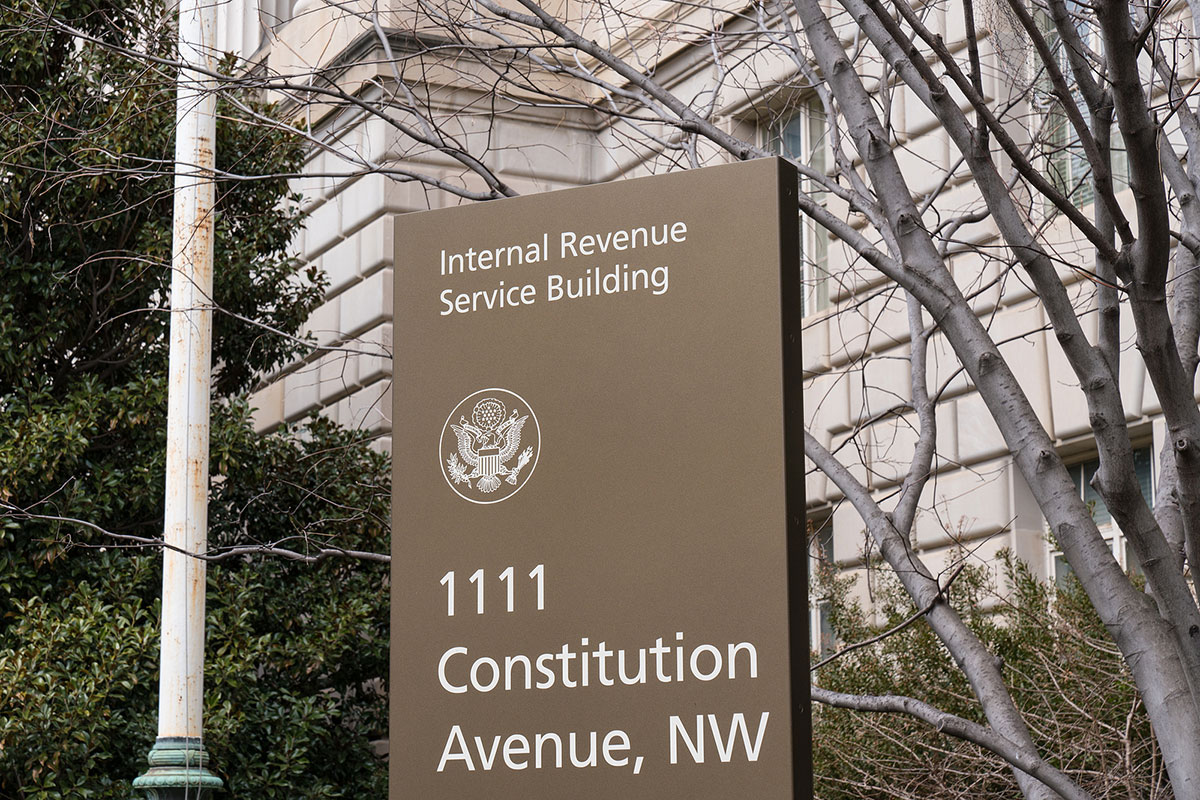
No matter what season of life you find yourself in, the IRS will probably find a way to tax it. In this month’s newsletter, read through several situations where a tax planning session might make sense to help you try and cut your 2024 tax bill.
Also learn how to prepare yourself financially when purchasing a vehicle, several ideas to unplug during this year’s summer season, and why every impression matters in the world of business.
As always, feel free to pass this information on to anyone that may find it useful and call if you have any questions or concerns.

Upcoming Dates
June 15
– Due Date Quarterly Estimated Taxes
Prepare Yourself Financially When Purchasing a Vehicle
Financing a new or used car could spell big financial trouble if your vehicle is ever declared a total loss – even if the accident is 100% the other driver’s fault. Here’s what you need to know about staying safe financially if you take out a car, truck, or SUV loan in the future.
Background – The 80% Rule
Many Americans believe if their vehicle is declared a total loss following an accident, insurance companies will provide enough money to cover the cost to replace the vehicle with a similar vehicle. The truth, though, is that insurance companies never provide you with enough money to buy a true replacement vehicle.
The rule of thumb to use when planning is 80%…if the true cost to get the exact same vehicle you were driving before an accident is $30,000, your insurance will only give you 80% of this dollar amount, or $24,000. You’ll have to come up with the other 20%, or $6,000 in this example.
Why not 100%?
Unbeknownst to most of America, the valuation of vehicles deemed a total loss is determined by one company, CCC Intelligent Solutions. Per CCC, their services are used by most of the top 20 insurance companies. Instead of using a fair market valuation method to calculate the replacement cost of your vehicle, CCC uses a model that calculates a value that, when compared to valuation models found at Kelly Blue Book, Edmunds, and NADA, is systemically low.
How to Protect Yourself Financially
Here are some ideas to help you stay financially healthy when purchasing your next vehicle:
- Put down at least 20%.An unavoidable accident, even with no medical bills, could place your financial life in chaos. So try to have at least 20% equity in the vehicles you own from the moment you make the purchase or your loan will be underwater leaving you with no room to replace your vehicle with a similar make and model.
- Get a vehicle history report.Don’t buy a vehicle that’s been in an accident or has had other major issues such as flood damage. Buying a vehicle history report can help you identify cars, trucks, & SUVs that may create an even greater financial risk if you need to find a replacement.
- Build a fund for vehicle repairs and maintenance.Save up for inevitable maintenance and vehicle repairs. You could even use these funds to cover your 20% portion of a vehicle’s replacement cost. Having enough money in this fund is critical. If you need to repair a car after a fender bender AND you do not have enough to cover your share of the cost, you will need to deal with the lender who has a lien on your vehicle. You can quickly find yourself in a financial trap.
- Choose shorter repayment terms.While the average car loan length is now well over five years for both new and used vehicles, choosing a shorter repayment term can help you build equity faster. You’ll have a higher monthly payment, but you’ll be in a better financial situation sooner in the event of an accident.

You Need Tax Planning If..
Life can alter your taxes with little to no warning. Here are several situations where you may need to schedule a tax planning session:
1. Getting married or divorced.
You could get hit with a Marriage Penalty in certain situations when the total taxes you pay as a married couple is more than what you would pay if you and your partner filed as Single taxpayers. The opposite can also occur, when you benefit from a Marriage Bonus. This often occurs when only one spouse has a job or earns income in other ways such as a business. Another situation when tax planning becomes critical is if you and your future spouse both own homes before getting married.
If you’re going from Married to Single, make the process include tax planning. Alimony is no longer deductible by the spouse making payments, while the spouse receiving the alimony must report the payments as taxable income at the federal level. Child support is also not deductible by the spouse making payments, and isn’t considered taxable income for the spouse receiving payments. In addition, not all assets are taxed the same, so their true value will vary.
2. Growing a family.
Your family’s newest addition(s) also comes with potential tax breaks. You’ll need a Social Security number for your newborn child and to understand the impact this little gem will have on your full-year tax situation. These include breaks to help pay for child care or adoption-related expenses, the child tax credit, and the Earned Income Tax Credit.
3. Changing jobs or getting a raise.
Getting more money at work is a good thing. But it also means a higher tax bill. So you may need to review your tax withholding to ensure there are no surprises at the end of the year. And when leaving an employer, expect a tax hit for severance, accrued vacation, and unemployment income payments.
Another potential tax problem if you get a raise or otherwise earn more money is that you may no longer qualify for certain tax breaks, as most tax deductions and tax credits phase out as your income increases. Consider scheduling a tax planning session to discuss the phase out thresholds that may affect you in 2024.
4. Buying or selling a house.
You can exclude up to $250,000 ($500,000 if married) of capital gains when you sell your home, but only if you meet certain qualifications. A tax planning session can help determine if you meet the qualifications to take advantage of this capital gain tax break, or other home-related tax breaks such as the mortgage interest deduction or credits for installing qualified energy-efficient home improvements.
5. Saving or paying for college.
There are many tax-advantaged ways to save and pay for college, including 529 savings plans, the American Opportunity Tax Credit, and the Lifetime Learning Credit. As you plan your future, understanding how these expenses can be managed often happens long before you begin your college journey.
At the end of the day, when in doubt please reach out. There is no reason to pay more than you need to and a simple tax planning session can make all the difference.

Business Advice: Every Impression Matters
With competition knocking at your door for virtually every product or service, you need to hone every advantage available to you. One of the ways you can set your business apart is to create an awesome customer experience with every interaction. This is less of an event and more a state of mind for your entire team. Here are several steps to help you get there:
- The three outcomes. Start by understanding that every interaction with customers AND vendors has three – and only three – possible outcomes: positive, neutral, or negative. Your goal is to make every interaction, from a label on a product to speaking with someone on a call, a positive experience. Or in a worse case scenario, neutral.
- Make a great first impression. The first impression a potential customer creates about your business can come from many different avenues. Train your customer service reps and create an approachable tone on the phone. If you choose to use social media, keep it fresh or take it down. See your lobby as others see it. All details matter.
- Manage the outcome. The best way to do this is to eliminate the possibility of a negative outcome with your first impression. With customer interaction, this is often accomplished with active listening and a smile.
For example, let’s say you receive a call from a customer wanting to hear about a new service. The employee that handles the service is not available and you are limited in your knowledge. The worst thing you can say is, I’m sorry, the person responsible for the service is not here at the moment. In the customer’s mind, you immediately remove the possibility of a positive outcome! Instead, engage the customer to hear about their needs, gather as much information as possible, and commit to finding the answers for them and calling them back immediately.
- Create slingshot experiences. No matter how well you strive to offer top-notch customer service, there will always be instances that are less than favorable. Use this as an opportunity to turn a negative experience into a positive one by thrilling the disgruntled customer with your solution. Even if the solution is costly and unreasonable, that customer will tell everyone the story about how you solved their problem.
- Use problems to make permanent improvements. Knowing your strengths can reaffirm your approach and help set customer service performance goals. On the other hand, learning about a bad experience from a customer’s perspective will give you great insight into how you can improve. Use these problems to focus your activity. Over time, the results of this continual improvement can have a tremendous impact on your business.
Creating a culture that excels at customer service is attainable if you put in the effort to know your customer’s needs and to understand that every impression matters!

Surviving Wedding Season Without Breaking the Bank
According to this survey by TheKnot.com, the average wedding in 2023 had a price tag of $35,000. And it’s not just the lucky couple doling out serious money. Wedding guests can also face steep costs between gifts and traveling to and from the big event. If you’re planning on attending a wedding or two (or three or four?) this summer, here are several ideas to help keep your wedding costs under control.
- Give cash instead of buying a gift off a registry. Most people want to give a wedding gift that, on some level, reflects the relationship they have with the couple. This desire to find that perfect gift can sometimes lead to overspending. Instead of buying a gift off a registry, consider giving cash. Sticking with cash can help you stick to your wedding season budget and avoid your gift being stuck in a box or closet that never gets used.
- Think outside the box for lodging. If traveling to a wedding, start looking at lodging options as soon as you know the date. First, check to see if you have family or friends in the area you would be comfortable staying with. Next, consider reconnecting with friends that are attending and share a room. Perhaps the wedding couple saved a block of rooms in a local hotel at a special rate. If so, compare the cost of that hotel with nearby hotels and short-term rentals. Remember to figure out your accommodations early so you don’t get stuck with just one expensive option.
- Share your travel expenses. It’s possible you’ll have some friends or family attending the same wedding as you. If the wedding involves traveling, split some of the costs with them. This can include carpooling, sharing a rental car, teaming up on taxi or ride-share expenses, as well as sharing hotel accommodations.
- Rent your attire. Going to a bunch of weddings in a short amount time can create a wardrobe challenge. Purchasing a new outfit for each one will get really expensive really quickly. If you take the one-and-done approach with your formal wear, renting a dress or suit will only set you back a fraction of the cost of buying new clothes for every wedding.
- Respectfully decline. Whether it’s the cost of travel, poor timing, or something else, it’s OK to decline the invitation. The wedding couple expects some people won’t be able to make it to their big event. But it’s important to let them know you won’t be there. When sending back the RSVP, include a kind greeting and the reason for your absence without going into great detail. When the wedding day comes, remember to send a card or a gift.
Wedding season is a time of fun and celebration. Knowing that you also made the best financial decisions possible makes the occasion even better.
As always, should you have any questions or concerns regarding your tax situation please feel free to call.
This publication provides summary information regarding the subject matter at time of publishing. Please call with any questions on how this information may impact your situation. This material may not be published, rewritten or redistributed without permission, except as noted here. This publication includes, or may include, links to third party internet web sites controlled and maintained by others. When accessing these links the user leaves this newsletter. These links are included solely for the convenience of users and their presence does not constitute any endorsement of the Websites linked or referred to nor does COUTO DEFRANCO P.A. have any control over, or responsibility for, the content of any such Websites. All rights reserved.




 Most financial experts suggest keeping three to six months worth of household expenses in savings to help in case of emergency. But with record inflation, that task just got a lot harder to accomplish as virtually every safe place to put your emergency funds will not provide interest rates that keep pace with inflation. But that does not mean you cannot increase the rate of return on these funds.
Most financial experts suggest keeping three to six months worth of household expenses in savings to help in case of emergency. But with record inflation, that task just got a lot harder to accomplish as virtually every safe place to put your emergency funds will not provide interest rates that keep pace with inflation. But that does not mean you cannot increase the rate of return on these funds.





 A big jump in cost-of-living calculations means a big jump in how much you can contribute to retirement accounts in 2023! Now is the time to plan your retirement contributions to take full advantage of this tax benefit. Here are annual contribution limits for several of the more popular retirement plans:
A big jump in cost-of-living calculations means a big jump in how much you can contribute to retirement accounts in 2023! Now is the time to plan your retirement contributions to take full advantage of this tax benefit. Here are annual contribution limits for several of the more popular retirement plans:










 With supply chain snarls still plaguing parts of the U.S. economy, many consumers are turning to gift cards as the holiday present of choice this year. In fact, according to the website Research and Markets, the United States gift card industry is expected to reach $188 billion in 2022.
With supply chain snarls still plaguing parts of the U.S. economy, many consumers are turning to gift cards as the holiday present of choice this year. In fact, according to the website Research and Markets, the United States gift card industry is expected to reach $188 billion in 2022.









 Paying bills is inevitable, but paying too much is not. Here are some tips to help you get a handle on your recurring monthly expenses.
Paying bills is inevitable, but paying too much is not. Here are some tips to help you get a handle on your recurring monthly expenses.


 5 Great Things to Know about IRAs
5 Great Things to Know about IRAs





 The IRS Announces Tax Scams
The IRS Announces Tax Scams





